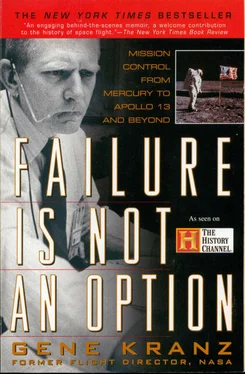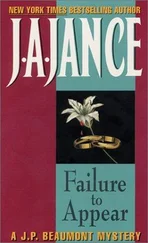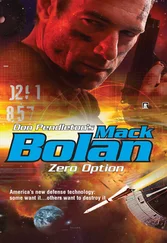The cheering didn’t stop there. Ron Evans, the command module pilot, was one of the CapComs most familiar to the Mission Control team. Along with Ken Mattingly, Charlie Duke, and Fred Haise, Evans had been the CapCom for four Apollo missions.
The commander on 17 would be “Captain America”—Gene Cernan, the Navy’s red-white-and-blue answer to Dave Scott. I thought this was fitting. I had launched Cernan on his first mission on Gemini 9 and now we would fly our last mission together.
Lunney, now in the Apollo program office, “borrowed” Aldrich for a trip to Russia to set up the joint U.S. and Russian working groups for a planned 1975 rendezvous mission. Aldrich, a pioneer in operations and developer of many great MCC systems engineers, was about to move on.
The new year got off to a gloomy start. We were told there would be no hiring and no promotions for the entire year. The misery continued as Apollo 16 was delayed for a variety of technical problems related to the LM batteries, pyrotechnics, experiments, and space suits. Another reason for the delay was that Charlie Duke, the Apollo 16 lunar module pilot, caught a flu bug and was unable to train for the mission.
John Young, Duke, and Ken Mattingly were assigned to Apollo 16, aboard the command ship Casper, with a landing target at the edge of the Descartes Mountains. Technically and scientifically, this would rate among our most successful missions—and one of the least remembered.
April 16, 1972, Apollo 16
My third Saturn launch was routine, if launching the world’s most powerful machine is ever routine. But, after achieving Earth orbit, we had one of those failures that the designer claims will never happen. Both regulators on the attitude control system were dumping gas overboard. With one eye on the Saturn IVB’s attitude control fuel and the other on the clock we raced through the Earth orbital check-out and briefed the crew on assuming manual attitude control. It was a tight race to get the spacecraft injected to the Moon and to extract the lunar module. Once again we lucked out.
The mission continued normally through the lunar orbit and the preparation for landing. The White Team had the shift preceding Griffin’s landing shift and had worked the usual “nits.” Phil Shaffer, an ex-FIDO now training as flight director, had been working with my team throughout the mission, assessing the impact of various anomalies and making sure that there were no modifications to the landing plan.
After the mission debriefing with Kraft and Dr. Berry on Apollo 15, the flight directors were once again in the loop on crew status, and crew potassium intake was now the main concern of the surgeons. We hoped to prevent problems of the type experienced on Apollo 15, so the astronauts were provided orange juice spiked with potassium that added electrolytes to the fluid. The concoction did not taste quite like nectar, and John Young was quick to inform us that it made his crew gassy and nauseated, not a good state for a confined cockpit in zero-G. The crew began a semicomic rebellion, with sharply reduced fluids and a reluctance to increase the orange juice intake.
The crew’s orange juice protest was becoming the “ditty” for the mission press conferences. To better understand the crew’s problems, and answer the questions at the press conference, I asked my ever-patient White Team flight surgeon to get me some of the juice. Within minutes a courier arrived from his back room with the infamous OJ. One dose was enough for me to get the crew’s point. It tasted thick, heavy, almost metallic. I offered the remainder to Shaffer, who wisely demurred. I leaned over the console and yelled to my surgeon, Dr. Z ( John Zieglschmid), “John, it tastes like crap. How about taking some to the press conference and let them take a shot?” Fortunately, there was no press conference scheduled for the shift and Dr. Z was not about to add to the controversy.
Shaffer and I concluded the handover to Griffin noting, “Looks like both spacecraft are clean going into activation and descent. Good luck.”
The lunar module power-up, undocking, and visual inspection went off without a hiccup. At undocking, we swung into a dual team operation. Don Puddy, formerly a TELMU, responsible for life support, electrical, mechanical, and EVAsystems on the LM, picked up flight director duties for the command module while Griffin followed the LM. The aerial ballet continued, with Puddy giving Mattingly the “Go for the circular maneuver” on the Moon’s back side during the twelfth orbit.
On revolution thirteen, Jay Greene and Chuck Deiterich in the Trench were the first to see that something was wrong. Tracking data indicated that Mattingly had not performed the scheduled maneuver. Their suspicion was confirmed when Mattingly’s voice broke through the static. “I scrubbed the burn,” he said. “TVC number 2 was unstable.”
Thrust vector control, TVC, was the steering system used to keep the spacecraft oriented during the course of a burn. If TVC was lost during a maneuver, the spacecraft would use precious attitude control fuel and in a long burn could start tumbling.
Mattingly continued to describe the problem symptoms, his troubleshooting, and the results. Ken was an expert on the CSM spacecraft systems, recognized by both designer and controller as the most knowledgeable of the CSM pilots. In Mission Control Ken worked well with the teams. As a CapCom he was a natural and intuitive pilot-engineer who asked the kind of questions that I wish I had asked.
From the tone of Mattingly’s voice, you could tell he was feeling embattled. After being scrubbed from Apollo 13, he had finally landed his trip to the Moon. Now a malfunction deep in the guts of the CSM engine control system was on the brink of denying his team their lunar landing. He knew the rules and grudgingly accepted the need for redundancy.
Ken also knew that the control team would press to find a way out of the current problem. If there was no fix, the controllers would reassess the rules, but they would likely arrive at the same position as they had before the mission. (For loss of redundancy in the CSM propulsion systems, the CSM would re-dock with the LM. The lunar landing would be scrubbed and the lunar phase of the mission would be terminated. The TEI maneuver would be performed while docked to the LM, like on Apollo 13, to provide a backup engine to return to earth.) When the burn for the maneuver was scrubbed, Griffin temporarily waved off the LM descent preparation.
The LM was already in the correct orbit to begin the descent to the Moon, so Greene planned a maneuver to return the CSM to the vicinity of the LM. If they solved the engine control problem this would give the crew the option to immediately swing into another landing attempt without additional LM maneuvers.
The problem hanging up the mission fell into GNC Larry Canin’s lap. It was like giving a piece of raw meat to a hungry tiger. The TVC system was Canin’s flight control specialty. Without waiting for the recorded telemetry from Mattingly’s testing to be processed, Canin informed Griffin: “Flight, tell Mattingly I want to run another TVC test. Give me a few seconds to get my team on line and get paper in my recorders and then let’s get going.”
Within minutes of Mattingly’s initial report the test was in progress. As it went forward, Larry’s gut feeling told him that the problem was an open circuit, a broken wire somewhere in the control system. Working with his backroom staff, Canin set out to develop a test to further isolate the problem. Canin had worked with me during the Apollo 9 mission when we had run a series of in-flight tests to determine what would happen under similar malfunction conditions.
Читать дальше












